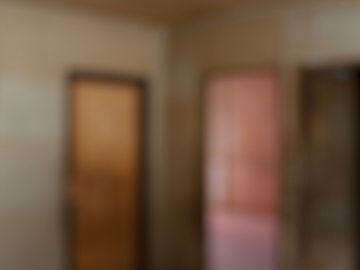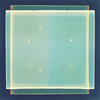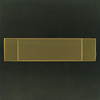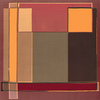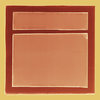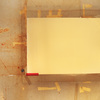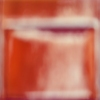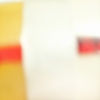CONSULTING > AVAILABLE WORKS > DAVID MITCHELL
Dru Arstark of Jim Kempner Fine Art in NY has established and sustained the market for Mitchell's work since 2010 while Lynn Dunham has served as print coordinator/ administrator and David Mitchell's agent since 2008. During her tenure his prints appeared first in the US at Neocon Chicago and the Surface Library in The Springs, NY and following at prestgious art fairs including the IFPDA. Other galleries who have represented or shown Mitchell's work include The Contessa Gallery, Edward Cella Art and Architecture, The Dryansky Gallery. His work has also appeared on a number of movie and television sets. His prints were shown at the Boutique Design NY Show, 1st Dibs showroom launch and the Architectural Digest “MADE” Show. James Kennedy of The Surface Library and Dunham presented Mitchell’s work in The Surface Library studio space in Chelsea in March 2010 where Dru Arstark was introduced to the work. As director of Jim Kempner Fine Art, she and Jim consigned prints from the AB 2011 and Linear collections immediately. After a steady success with his work, Mitchell was awarded a solo show in the spring of 2011. In 2013 Dunham introduced Lyle Rexer to the gallery and David arranging for him to curate and write the essay for his solo show in the fall October of that year for the catalogue which follows along with a CV and bio. The gallery continues to show his work at art fairs and in Chelsea although Dunham and Mitchell have parted ways. Prints displayed on this website are from a private collection and are available for sale exclusively at Lynn Dunham Fine Art.
DAVID MITCHELL: Bio
Mitchell’s photography career started in the early eighties in London, Florence and Milan. In 1991 he moved to Hong Kong where he found instant success shooting for prestigious fashion labels including Christian Dior and Laura Biagiotti. He worked almost exclusively in black & white, creating a unique signature style with conscious echoes of Jacques-Henri Lartigue.
His international reputation growing quickly, Mitchell was engaged to shoot editorial for the very top international fashion magazines: Vogue and Elle. He was also a pioneer in Asia as the first successful foreign photographer on the dynamic Thai fashion scene, shooting extensively for top publications. His work became recognized by the advertising industry and he continued to expand into the commercial world and built up a considerable roster of clients such as Singapore Airlines, Mercedes-Benz, Sony, Hong Kong Bank, Ericsson. As imitators clamored to emulate his classic styling in stills, he segued to explore the moving image in both personal and commercial work through film. He welcomed the opportunity to direct projects for the National Kidney Foundation in Singapore which dealt with severe disability and terminal illness in children. He was also invited to be the Director of Photography to shoot the Royal Thai Anti Drugs campaigns as his interest in working in the fashion industry due to its superficiality dwindled. In the mid nineties beginning to diversify into the fine art arena, he received requests from private collectors interested in his fine art works at which point he began to shoot in color more frequently and he continues in this vein today continuing to develop a body of work considered highly collectable. This work has now been made available to a wider audience after exhibitions in Shanghai and Singapore. Having sold out many of the older collections of early work his more contemporary print work is now available in strictly limited editions. The artist divides his time between his homes in Bangkok and Singapore, energized by the dynamism and color of the region.
The Dog Must Howl: On the Art of David Mitchell - Lyle Rexer
What is it we see when we open our eyes on the world? What can art show us of that? With a profound immediacy, the work of David Mitchell has revived these questions posed by the philosopher Maurice Merleau-Ponty. Merleau-Ponty once wrote of painting, “…it offers to vision its inward tapestries, the imaginary texture of the real.” The philosopher had little interest in photography, given its traditionally static, not to say iconic relationship to material reality. Merleau-Ponty’s great theme was the imaginative construction of reality through the artist’s perception, a profound hunger to make what is outside inside – and vice versa. This hunger impels the work of David Mitchell, a photographer unique among his contemporaries.
Usually the attempt by photographers to pursue a path outward from the inside leads either to surrealism or to a kind of coat-tail pulling formalism, where visual analogy is meant to stand in for psychic and spiritual connection. This is in contrast to other more political forms of abstraction in photography, from early Suprematism and the New Vision of the Bauhaus, whose point was to promote an idea of order beyond the visible, to contemporary content-free imagery that seeks to foreclose any interpretation at all: what you see is what you get.
David Mitchell uses the techniques of photography, combined with digital tools, to make an image of his inner experience, to build toward specificity rather than to court ambiguity. That inner experience is one of unsurpassed intensity and visual richness, a space where his physical body and its events intersect the world and its impressions. An earlier time, Merleau-Ponty’s for instance, would have called the response visionary, before that word was trivialized. In the starkest terms, it involves Mitchell’s attempt to find a visual “language” for depicting supremely altered states of perception and consciousness induced by left temporal lobe epilepsy, which first appeared a decade ago. He does not make metaphors, as conventional photographers unavoidably do. He strives for an impossible transparency.
Clinical literature is accumulating about LTLE, presenting stories of individuals with the condition experiencing episodes of unquenchable creativity, in fields that often have no prior relevance to their symptomless lives. That is not quite true in Mitchell’s case. He had been a successful fashion and editorial photographer, so the camera as a device and his professional milieu implanted a repertoire of responses (choices about framing, point of view, depth of field, color, and graphic form, as well mise-en-scène and narrative arrangement). Thus, along with the “what” of his art there was already a nascent sense of “how.” Yet nothing prepared him for the “what,” the overwhelming tide of sensations and memories that LTLE triggers. As he describes it, the experience is like opening a box he never knew existed, and finding inside it everything, but transformed beyond recognition: sight, sound, smell, color, space, memory, corporeality itself. He stands outside himself, aware of his body immersed in the tide of intense colors, auras, sounds, forms. Suddenly, in a rush, the fullness of being is opened and “the inward tapestry of vision” revealed. It is bliss, but crushing.
With these episodes came the sudden drive to give form to an expression, to do what the dreamer inside the grip of a dream cannot do, which is to seize and transmit some aspect of it. “The dog howls at the moon,” says Mitchell. “The dog has no choice. I have no choice but to try to snatch what I can.” Which is not to say that the process of translation, or call it assimilation, is easy or simple. Merleau-Ponty’s writing on Cezanne has unveiled the shifting intricacy of an artist’s attempts to capture the visible. Yet with Mitchell’s work there is a sense that the search for appropriate means was and is inevitable because the pull of the subject is so strong. The search continues, impelled by vision, what he calls his lucid dreaming.
The first and most important step for Mitchell was to jettison black and white photography in favor of color. His antiquarian comfort, the comfort of formalism and control, could not withstand the tide of sensation. It would have been like singing in silence. Colors can blend and match or clamor discordantly, only to form new accords. Color binds us to the surrounding world, an actual ligament. Color reminds us that the experience of our being is more than an image or an idea; it is a totality, lived through our bodies, indivisible. Working with color, the artist works with the world, with the light that emanates from it. Black and white could reenter his thinking – as it has recently in engrossing large-scale works – only after color had changed his vision by revealing light’s dual character, transformative and transparent. At the same time, Mitchell needed a foundation for the work, a visual starting point, like the initial mark on a canvas, and he found it in fabric he would collect then assemble into graphic constructions. In early works, he preserved visual references to this collage foundation, whose materials were discarded after photographing. The impulse may have been to ground the images by providing a sign to the viewer that the photographs were exactly that and that they were about something, that is, something distinctly out there.
Since 2010 and especially in the most recent images, that anchor has been cut loose. The foundational constructions are no longer apparent as such, with fewer and fewer anecdotal references (mesh, torn fabric edges, tape). Memory and loss, the classic themes of photography, no longer haunt the pictures. They have become more abstract, richer in information and visual texture and, I believe, truer to their intentions. Critical attempts to affiliate the work with constructivism, concrete art and minimalism, all ideologically based movements long since extinct, make little sense. Mitchell might be practicing a species of process art, except that he appears to have no interest in process for its own sake or in chance, except insofar as these might lead him closer to his elusive goal. The outcome cannot be known in advance, but that doesn’t mean unpredictability is the point. Mitchell uses both in-camera strategies, including double exposures, extreme close ups, gels and filters, and, post facto, digital programs. He clearly does not care about photographic purity or issues of ontology and virtuality. He makes images to approach ever more faithfully the texture of his experiences. “I have to surrender to the process so I can work quickly,” he says. “Otherwise I feel I am dragging a dead weight.” His techniques are not rocket science, but they illustrate a fundamental axiom of creativity, that everything is explored on a need-to-know basis. Like Cezanne, who constantly lamented his lack of ability as a painter, if Mitchell needs it, he figures out how to do it, and figuring it out leads him to new and better ways of rendering. Like Cezanne, who constantly lamented his lack of ability as a painter, if Mitchell needs it, he figures out how to do it, and figuring it out leads him to new and better ways of rendering which can only approach the goal and, thus, prompt yet another beginning, another series. As the work becomes less nostalgic, it becomes more poignant.
It recalls the character of the land surveyor in Kafka’s The Castle, who gains a blasted grandeur as his goal recedes. Not that Mitchell is a martyr. He has stated that if he were given the chance to be cured of his epilepsy, as debilitating as it often is, he would not take it. Having howled at the moon, he cannot give it up but must pursue the moon in its insurmountable distance because it is the most beautiful object in the sky.
Lyle Rexer, Brooklyn, New York
Lyle Rexer is a critic, curator, and lecturer. He was educated at the University of Michigan, Columbia University (from which he holds B.A. and M.A. degrees), and Merton College, Oxford University, which he attended as a Rhodes Scholar. He is the author of several books, including The Edge of Vision: The Rise of Abstraction in Photography (2009), for which he received a grant from the Arts Writers Grant Program of the Andy Warhol Foundation, and Photography’s Antiquarian Avant-Garde: The New Wave in Old Processes (2002), which showcased contemporary photographers working with 19th century photographic techniques. He has published many catalogue essays and hundreds of articles in a variety of publications, including The New York Times, Art in America, Harper’s, Aperture, Modern Painters, Parkett, and Tate, Etc. As a curator, he has organized exhibitions in the United States and internationally, including “The Edge of Vision: Abstraction in Contemporary Photography.” Lyle Rexer teaches at the School of Visual Arts in New York City and is a columnist for Photograph magazine.
DAVID M. MITCHELL CV
SOLO EXHIBITIONS
2015 David Mitchell: Boundaries
The Dryansky Gallery, San Francisco
2014 David Mitchell: A Five Year Look
Jim Kempner Fine Art/Underground
2013 The Dog Must Howl: David Mitchell
New Large Scale Photographs - Jim Kempner Fine Art
2012 Amelia Johnson Contemporary “David M. Mitchell, On Form”
2012 Jim Kempner Fine Art, NY, NY - David Mitchell: Photographs
2011 Chemtura Corporation, Philadelphia, PA
David Mitchell: Works curated from the Janusian collection
2011 RMA Institute, Bangkok, Thailand
Concretism: David Mitchell - Abstracts 2011
2010 Kathmandu Photo Gallery, Bangkok, Thailand
David Mitchell: Amorphous
2010 Surface Library -The Viewing Room, NY, NY
David Mitchell: Janusian
GROUP EXHIBITIONS
2015 Five Photographers: Jim Kempner Fine Art, NY2015 INspection: The Poetry of Space
The Drawing Room, Connecticut
2014 Aperture Foundation Inaugural juried summer show
Juror: Chris Boot, Executive Director
2014 Philadelphia Photographic Arts
5rd Annual Contemporary Photography Exhibition
curated by Brian Clamp, Owner and Director of ClampArt/NY
and Mary Ellen Mark, photographer
2014 Page Bond Gallery, Richmond, VA
Annual Viewfind group exhibition
2012 3rd Annual Contemporary Photography Exhibition curated by
Natasha Egan and Kathy Ryan
Philadelphia Photographic Arts
2012 Edward Cella Art and Architecture, Santa Barbara, CA
Photography
2011 Jim Kempner Fine Art, NY
Conversations in Post Minimalist Abstraction
2011 NYDC Highland Park 1stDibs Showroom
Launch Celebration, NY, NY
2011 Surface Library - The Viewing Room, NY, NY
Architectural Digest Studio Show
2010 Sande Webster Gallery, Philadelphia, PA
Gallery 2010 Retrospective
2011 Perkin’s Center for the Arts, NJ - Photography 30
2010 RVS Gallery, Southampton, NY
2010 Sande Webster Gallery, Philadelphia, PA
Divergence: Five photographers’ views on the changing medium
of photography in the 21st century
2010 June Bateman Fine Art - Salon show of gallery artists
2010 Guild Hall, East Hampton, NY - Annual Member’s Show
2009 Surface Library Gallery, East Hampton/Springs, NY
Textures
2004 The American Club Singapore
2003 Bund 18 Shanghai
2003 Gendela Gallery, The Esplanade Singapore
1989 Pizzo, Calabria Italy
ART FAIRS
2014 Miami Projects - Jim Kempner Fine Art
2014 IFPDA Print Fair, NY - Jim Kempner Fine Art
2014 Downtown Art Fair, NY - Jim Kempner Fine Art
2013 IFPDA Print Fair, NY - Jim Kempner Fine Art
2013 Art Southampton - The Contessa Gallery
2013 Art Hamptons - Jim Kempner Fine Art
2012 Art Miami - Jim Kempner Fine Art
2012 Art Miami - The Contessa Gallery
2012 IFPDA Print Fair, NY - Jim Kempner Fine Art
2012 Art Miami
2012 Art Platform LA - Edward Cella Art and Architecture
2012 Seafair/Art Greenwich - The Contessa Gallery
2012 Art Southampton - The Contessa Gallery
2012 Baltimore Contemporary Print Fair
Baltimore Museum of Art - Jim Kempner Fine Art
2011 Art Miami - Jim Kempner Fine Art
2011 The 27th Annual Print Fair, Fine Art Print Fair
The Print Club of Cleveland An affiliate group
of the Cleveland Museum of Art - Jim Kempner Fine Art
2010 Architectural Digest Home Show: “MADE” NY, NY
2009 Boutique Design NY Show
2009 NEOCON, Chicago
CLIENTS/COLLECTORS
Collectors in: Belgium, France, Israel, Italy, Brazil, Malaysia, Thailand,
Singapore, Australia, Japan, United Kingdom and The United States
Deloitte and Touche LLP, Washington DC
Momentum Design Sdn Bhd, Kuala Lumpur, Malaysia
The Natural History Museum Vienna
Epson
De Beers Diamonds
Vogue Magazine
Elle Magazine
Christian Dior
Laura Biagiotti
Kei Ito
Bund 18 Shanghai
Singapore Airlines
Citibank
Ericsson
Sony Bank of Indonesia
DBS Bank
FILM AND TELEVISION
2012 NBC: Escape Routes
2011 CBS: Blue Bloods
2011 USA Network: Royal Pains
2011 USA Network: White Collar
2011 Universal Studios/Relativity's Rogue Pictures: Limitless
2010 20th Century Fox: Wall Street: Money Never Sleeps
DIRECTOR OF PHOTOGRAPHY
Royal Thai Anti Drugs campaign
Film Director: NKF, Singapore
Film Director: Central Department Store
Film Director: Homeland Securities, Singapore
Film Director: Kei Ito designer; short film project
Filer Director: Bund 18 young fashion designers, Shanghai
Managing Director: Yo-Yo Film Productions Pte Ltd
Managing Director: David Mitchell Photography
Film Director: Two Oceans Productions, Singapore
Managing Director: Addspin Pte Ltd, Singapore
Managing Director: Suekai.com Pte Ltd
RETURN TO TOP
DAVID MITCHELL: Bio
Mitchell’s photography career started in the early eighties in London, Florence and Milan. In 1991 he moved to Hong Kong where he found instant success shooting for prestigious fashion labels including Christian Dior and Laura Biagiotti. He worked almost exclusively in black & white, creating a unique signature style with conscious echoes of Jacques-Henri Lartigue.
His international reputation growing quickly, Mitchell was engaged to shoot editorial for the very top international fashion magazines: Vogue and Elle. He was also a pioneer in Asia as the first successful foreign photographer on the dynamic Thai fashion scene, shooting extensively for top publications. His work became recognized by the advertising industry and he continued to expand into the commercial world and built up a considerable roster of clients such as Singapore Airlines, Mercedes-Benz, Sony, Hong Kong Bank, Ericsson. As imitators clamored to emulate his classic styling in stills, he segued to explore the moving image in both personal and commercial work through film. He welcomed the opportunity to direct projects for the National Kidney Foundation in Singapore which dealt with severe disability and terminal illness in children. He was also invited to be the Director of Photography to shoot the Royal Thai Anti Drugs campaigns as his interest in working in the fashion industry due to its superficiality dwindled. In the mid nineties beginning to diversify into the fine art arena, he received requests from private collectors interested in his fine art works at which point he began to shoot in color more frequently and he continues in this vein today continuing to develop a body of work considered highly collectable. This work has now been made available to a wider audience after exhibitions in Shanghai and Singapore. Having sold out many of the older collections of early work his more contemporary print work is now available in strictly limited editions. The artist divides his time between his homes in Bangkok and Singapore, energized by the dynamism and color of the region.
The Dog Must Howl: On the Art of David Mitchell - Lyle Rexer
What is it we see when we open our eyes on the world? What can art show us of that? With a profound immediacy, the work of David Mitchell has revived these questions posed by the philosopher Maurice Merleau-Ponty. Merleau-Ponty once wrote of painting, “…it offers to vision its inward tapestries, the imaginary texture of the real.” The philosopher had little interest in photography, given its traditionally static, not to say iconic relationship to material reality. Merleau-Ponty’s great theme was the imaginative construction of reality through the artist’s perception, a profound hunger to make what is outside inside – and vice versa. This hunger impels the work of David Mitchell, a photographer unique among his contemporaries.
Usually the attempt by photographers to pursue a path outward from the inside leads either to surrealism or to a kind of coat-tail pulling formalism, where visual analogy is meant to stand in for psychic and spiritual connection. This is in contrast to other more political forms of abstraction in photography, from early Suprematism and the New Vision of the Bauhaus, whose point was to promote an idea of order beyond the visible, to contemporary content-free imagery that seeks to foreclose any interpretation at all: what you see is what you get.
David Mitchell uses the techniques of photography, combined with digital tools, to make an image of his inner experience, to build toward specificity rather than to court ambiguity. That inner experience is one of unsurpassed intensity and visual richness, a space where his physical body and its events intersect the world and its impressions. An earlier time, Merleau-Ponty’s for instance, would have called the response visionary, before that word was trivialized. In the starkest terms, it involves Mitchell’s attempt to find a visual “language” for depicting supremely altered states of perception and consciousness induced by left temporal lobe epilepsy, which first appeared a decade ago. He does not make metaphors, as conventional photographers unavoidably do. He strives for an impossible transparency.
Clinical literature is accumulating about LTLE, presenting stories of individuals with the condition experiencing episodes of unquenchable creativity, in fields that often have no prior relevance to their symptomless lives. That is not quite true in Mitchell’s case. He had been a successful fashion and editorial photographer, so the camera as a device and his professional milieu implanted a repertoire of responses (choices about framing, point of view, depth of field, color, and graphic form, as well mise-en-scène and narrative arrangement). Thus, along with the “what” of his art there was already a nascent sense of “how.” Yet nothing prepared him for the “what,” the overwhelming tide of sensations and memories that LTLE triggers. As he describes it, the experience is like opening a box he never knew existed, and finding inside it everything, but transformed beyond recognition: sight, sound, smell, color, space, memory, corporeality itself. He stands outside himself, aware of his body immersed in the tide of intense colors, auras, sounds, forms. Suddenly, in a rush, the fullness of being is opened and “the inward tapestry of vision” revealed. It is bliss, but crushing.
With these episodes came the sudden drive to give form to an expression, to do what the dreamer inside the grip of a dream cannot do, which is to seize and transmit some aspect of it. “The dog howls at the moon,” says Mitchell. “The dog has no choice. I have no choice but to try to snatch what I can.” Which is not to say that the process of translation, or call it assimilation, is easy or simple. Merleau-Ponty’s writing on Cezanne has unveiled the shifting intricacy of an artist’s attempts to capture the visible. Yet with Mitchell’s work there is a sense that the search for appropriate means was and is inevitable because the pull of the subject is so strong. The search continues, impelled by vision, what he calls his lucid dreaming.
The first and most important step for Mitchell was to jettison black and white photography in favor of color. His antiquarian comfort, the comfort of formalism and control, could not withstand the tide of sensation. It would have been like singing in silence. Colors can blend and match or clamor discordantly, only to form new accords. Color binds us to the surrounding world, an actual ligament. Color reminds us that the experience of our being is more than an image or an idea; it is a totality, lived through our bodies, indivisible. Working with color, the artist works with the world, with the light that emanates from it. Black and white could reenter his thinking – as it has recently in engrossing large-scale works – only after color had changed his vision by revealing light’s dual character, transformative and transparent. At the same time, Mitchell needed a foundation for the work, a visual starting point, like the initial mark on a canvas, and he found it in fabric he would collect then assemble into graphic constructions. In early works, he preserved visual references to this collage foundation, whose materials were discarded after photographing. The impulse may have been to ground the images by providing a sign to the viewer that the photographs were exactly that and that they were about something, that is, something distinctly out there.
Since 2010 and especially in the most recent images, that anchor has been cut loose. The foundational constructions are no longer apparent as such, with fewer and fewer anecdotal references (mesh, torn fabric edges, tape). Memory and loss, the classic themes of photography, no longer haunt the pictures. They have become more abstract, richer in information and visual texture and, I believe, truer to their intentions. Critical attempts to affiliate the work with constructivism, concrete art and minimalism, all ideologically based movements long since extinct, make little sense. Mitchell might be practicing a species of process art, except that he appears to have no interest in process for its own sake or in chance, except insofar as these might lead him closer to his elusive goal. The outcome cannot be known in advance, but that doesn’t mean unpredictability is the point. Mitchell uses both in-camera strategies, including double exposures, extreme close ups, gels and filters, and, post facto, digital programs. He clearly does not care about photographic purity or issues of ontology and virtuality. He makes images to approach ever more faithfully the texture of his experiences. “I have to surrender to the process so I can work quickly,” he says. “Otherwise I feel I am dragging a dead weight.” His techniques are not rocket science, but they illustrate a fundamental axiom of creativity, that everything is explored on a need-to-know basis. Like Cezanne, who constantly lamented his lack of ability as a painter, if Mitchell needs it, he figures out how to do it, and figuring it out leads him to new and better ways of rendering. Like Cezanne, who constantly lamented his lack of ability as a painter, if Mitchell needs it, he figures out how to do it, and figuring it out leads him to new and better ways of rendering which can only approach the goal and, thus, prompt yet another beginning, another series. As the work becomes less nostalgic, it becomes more poignant.
It recalls the character of the land surveyor in Kafka’s The Castle, who gains a blasted grandeur as his goal recedes. Not that Mitchell is a martyr. He has stated that if he were given the chance to be cured of his epilepsy, as debilitating as it often is, he would not take it. Having howled at the moon, he cannot give it up but must pursue the moon in its insurmountable distance because it is the most beautiful object in the sky.
Lyle Rexer, Brooklyn, New York
Lyle Rexer is a critic, curator, and lecturer. He was educated at the University of Michigan, Columbia University (from which he holds B.A. and M.A. degrees), and Merton College, Oxford University, which he attended as a Rhodes Scholar. He is the author of several books, including The Edge of Vision: The Rise of Abstraction in Photography (2009), for which he received a grant from the Arts Writers Grant Program of the Andy Warhol Foundation, and Photography’s Antiquarian Avant-Garde: The New Wave in Old Processes (2002), which showcased contemporary photographers working with 19th century photographic techniques. He has published many catalogue essays and hundreds of articles in a variety of publications, including The New York Times, Art in America, Harper’s, Aperture, Modern Painters, Parkett, and Tate, Etc. As a curator, he has organized exhibitions in the United States and internationally, including “The Edge of Vision: Abstraction in Contemporary Photography.” Lyle Rexer teaches at the School of Visual Arts in New York City and is a columnist for Photograph magazine.
DAVID M. MITCHELL CV
SOLO EXHIBITIONS
2015 David Mitchell: Boundaries
The Dryansky Gallery, San Francisco
2014 David Mitchell: A Five Year Look
Jim Kempner Fine Art/Underground
2013 The Dog Must Howl: David Mitchell
New Large Scale Photographs - Jim Kempner Fine Art
2012 Amelia Johnson Contemporary “David M. Mitchell, On Form”
2012 Jim Kempner Fine Art, NY, NY - David Mitchell: Photographs
2011 Chemtura Corporation, Philadelphia, PA
David Mitchell: Works curated from the Janusian collection
2011 RMA Institute, Bangkok, Thailand
Concretism: David Mitchell - Abstracts 2011
2010 Kathmandu Photo Gallery, Bangkok, Thailand
David Mitchell: Amorphous
2010 Surface Library -The Viewing Room, NY, NY
David Mitchell: Janusian
GROUP EXHIBITIONS
2015 Five Photographers: Jim Kempner Fine Art, NY2015 INspection: The Poetry of Space
The Drawing Room, Connecticut
2014 Aperture Foundation Inaugural juried summer show
Juror: Chris Boot, Executive Director
2014 Philadelphia Photographic Arts
5rd Annual Contemporary Photography Exhibition
curated by Brian Clamp, Owner and Director of ClampArt/NY
and Mary Ellen Mark, photographer
2014 Page Bond Gallery, Richmond, VA
Annual Viewfind group exhibition
2012 3rd Annual Contemporary Photography Exhibition curated by
Natasha Egan and Kathy Ryan
Philadelphia Photographic Arts
2012 Edward Cella Art and Architecture, Santa Barbara, CA
Photography
2011 Jim Kempner Fine Art, NY
Conversations in Post Minimalist Abstraction
2011 NYDC Highland Park 1stDibs Showroom
Launch Celebration, NY, NY
2011 Surface Library - The Viewing Room, NY, NY
Architectural Digest Studio Show
2010 Sande Webster Gallery, Philadelphia, PA
Gallery 2010 Retrospective
2011 Perkin’s Center for the Arts, NJ - Photography 30
2010 RVS Gallery, Southampton, NY
2010 Sande Webster Gallery, Philadelphia, PA
Divergence: Five photographers’ views on the changing medium
of photography in the 21st century
2010 June Bateman Fine Art - Salon show of gallery artists
2010 Guild Hall, East Hampton, NY - Annual Member’s Show
2009 Surface Library Gallery, East Hampton/Springs, NY
Textures
2004 The American Club Singapore
2003 Bund 18 Shanghai
2003 Gendela Gallery, The Esplanade Singapore
1989 Pizzo, Calabria Italy
ART FAIRS
2014 Miami Projects - Jim Kempner Fine Art
2014 IFPDA Print Fair, NY - Jim Kempner Fine Art
2014 Downtown Art Fair, NY - Jim Kempner Fine Art
2013 IFPDA Print Fair, NY - Jim Kempner Fine Art
2013 Art Southampton - The Contessa Gallery
2013 Art Hamptons - Jim Kempner Fine Art
2012 Art Miami - Jim Kempner Fine Art
2012 Art Miami - The Contessa Gallery
2012 IFPDA Print Fair, NY - Jim Kempner Fine Art
2012 Art Miami
2012 Art Platform LA - Edward Cella Art and Architecture
2012 Seafair/Art Greenwich - The Contessa Gallery
2012 Art Southampton - The Contessa Gallery
2012 Baltimore Contemporary Print Fair
Baltimore Museum of Art - Jim Kempner Fine Art
2011 Art Miami - Jim Kempner Fine Art
2011 The 27th Annual Print Fair, Fine Art Print Fair
The Print Club of Cleveland An affiliate group
of the Cleveland Museum of Art - Jim Kempner Fine Art
2010 Architectural Digest Home Show: “MADE” NY, NY
2009 Boutique Design NY Show
2009 NEOCON, Chicago
CLIENTS/COLLECTORS
Collectors in: Belgium, France, Israel, Italy, Brazil, Malaysia, Thailand,
Singapore, Australia, Japan, United Kingdom and The United States
Deloitte and Touche LLP, Washington DC
Momentum Design Sdn Bhd, Kuala Lumpur, Malaysia
The Natural History Museum Vienna
Epson
De Beers Diamonds
Vogue Magazine
Elle Magazine
Christian Dior
Laura Biagiotti
Kei Ito
Bund 18 Shanghai
Singapore Airlines
Citibank
Ericsson
Sony Bank of Indonesia
DBS Bank
FILM AND TELEVISION
2012 NBC: Escape Routes
2011 CBS: Blue Bloods
2011 USA Network: Royal Pains
2011 USA Network: White Collar
2011 Universal Studios/Relativity's Rogue Pictures: Limitless
2010 20th Century Fox: Wall Street: Money Never Sleeps
DIRECTOR OF PHOTOGRAPHY
Royal Thai Anti Drugs campaign
Film Director: NKF, Singapore
Film Director: Central Department Store
Film Director: Homeland Securities, Singapore
Film Director: Kei Ito designer; short film project
Filer Director: Bund 18 young fashion designers, Shanghai
Managing Director: Yo-Yo Film Productions Pte Ltd
Managing Director: David Mitchell Photography
Film Director: Two Oceans Productions, Singapore
Managing Director: Addspin Pte Ltd, Singapore
Managing Director: Suekai.com Pte Ltd
RETURN TO TOP

